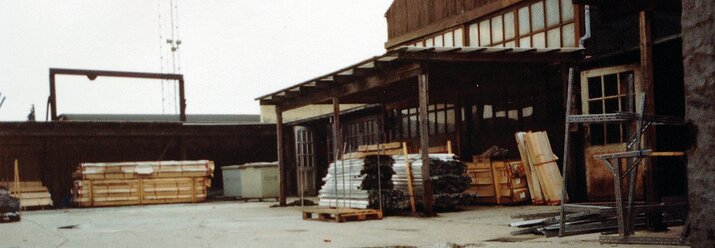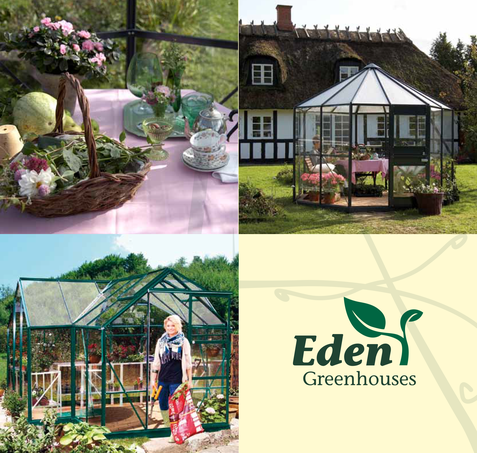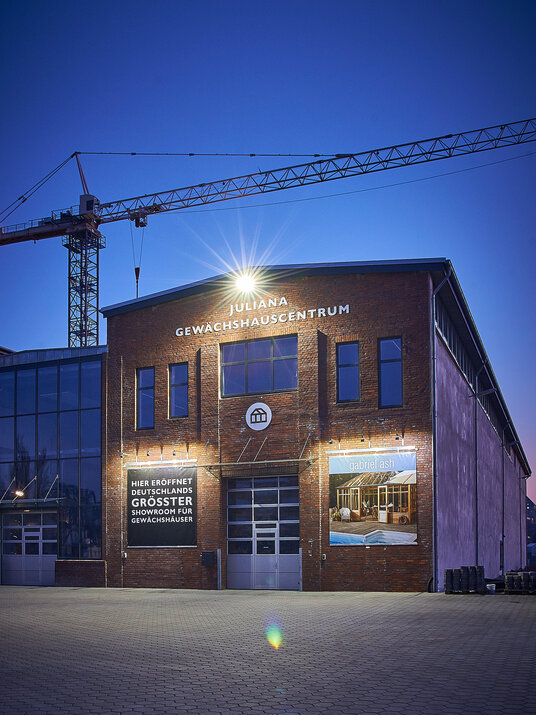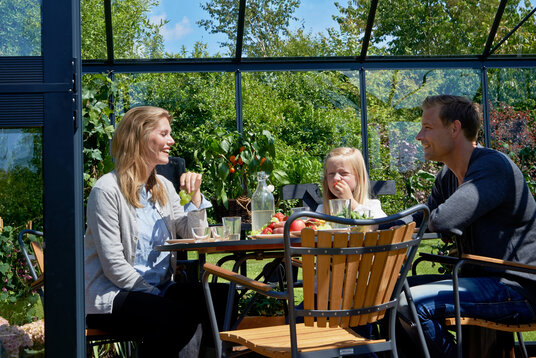The History of Juliana Group
Juliana Greenhouses was established in Odense in 1963 by Mogens A. Stærmose. It marked the beginning of Juliana Group, which today is one of the world's leading manufacturers of greenhouses for private use
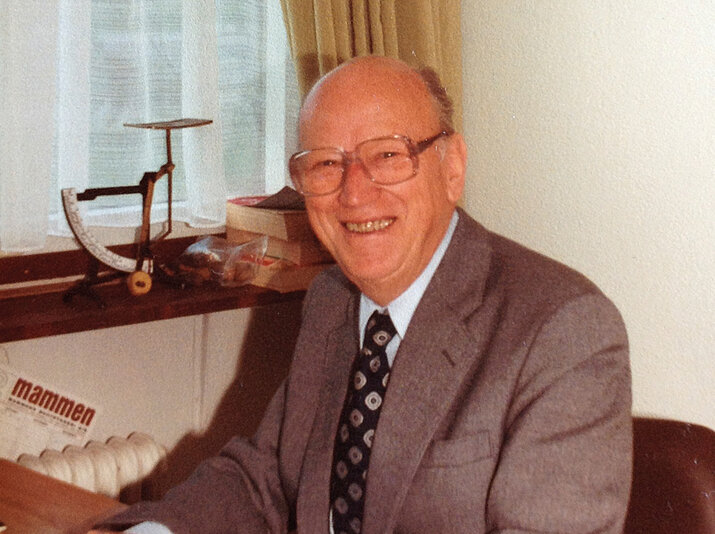
It All Started in 1963
In 1963, Mogens A. Stærmose founded the business that currently bears the name Juliana Drivhuse A/S, marking the start of more than fifty years of dynamic development and growth.
The enterprise started out by manufacturing clothes-drying racks for indoor use, and later on began to manufacture the rotary clothes airers that are so familiar today.
Some of the products were manufactured in the basement of Mogens A. Stærmose’s home, but the entire process was subsequently relocated to facilities near the Odense waterfront. As Mogens A. Stærmose had previously worked as a travelling salesman, the drying racks were primarily sold on the Danish market through ironmongers all over the country.
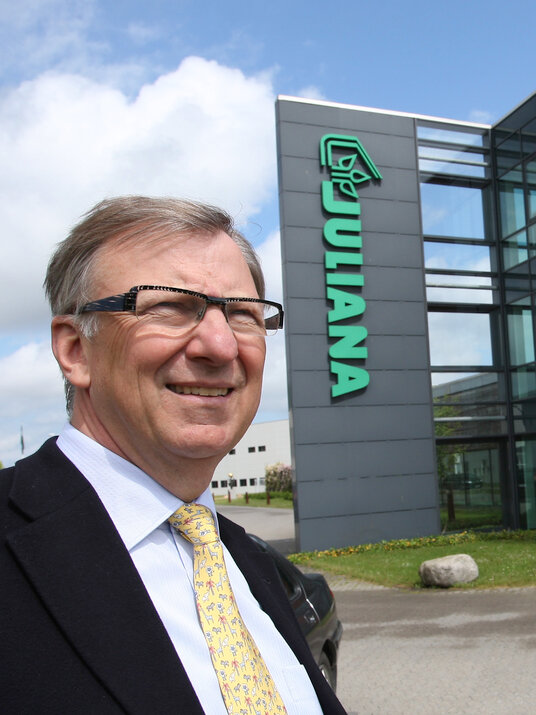
1979 • From One Stærmose to the Next
In the late 1970s, Mogens A. Stærmose started contemplating retirement and therefore he wanted to prepare the company to be sold.
Bo Stærmose, his son and a qualified lawyer, assisted him in this process. Ownership of the company was transferred but, unexpectedly, Bo Stærmose ended up as the new owner, and the generational changeover was completed in 1983.
In the years leading up to this, Bo Stærmose had begun to export greenhouses to neighbouring markets in Scandinavia and Germany, and in the 1980s exports really took off.
Juliana’s quality products were popular and exports soon outstripped domestic sales in Denmark.
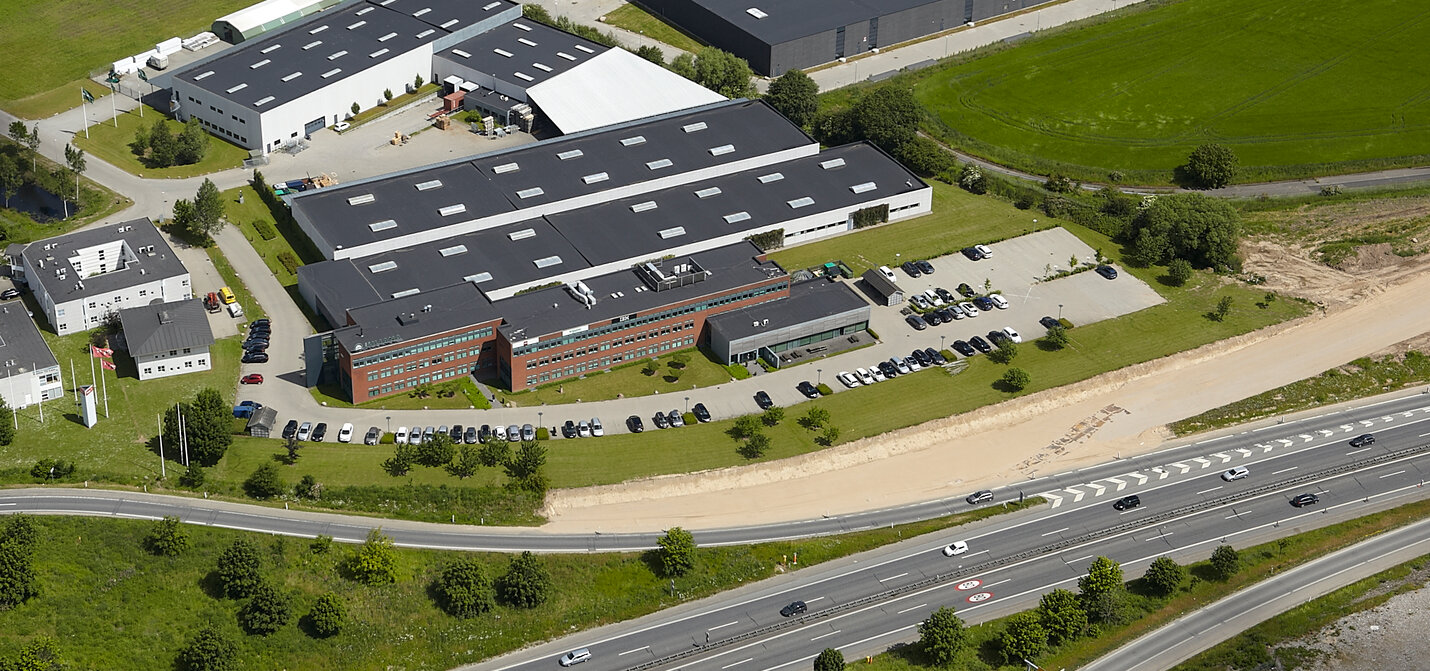
1999 • Juliana Makes an Important Choice
Outsourcing became a widespread trend in the Danish business community throughout the 1990s. Due to the high cost of labour, many companies relocated their production processes to low-wage countries in eastern Europe and subsequently the Far East, and Juliana Drivhuse was also considering its options.
Two fundamental factors were crucial in its decision to remain in Denmark. One was the integral relationship between manufacturing and product development, and product development is crucial for Juliana’s ability to cope in a market where consumers seek innovative and creative solutions.
The other was that, as greenhouses are seasonal products, flexibility is undermined by relocating production halfway around the world.
Therefore, the company decided to invest in the construction of a brand-new factory right next to Funen’s motorway. This splendid new factory was ready for occupancy in 1999, and the company introduced a number of automated measures to increase production efficiency at the same time.
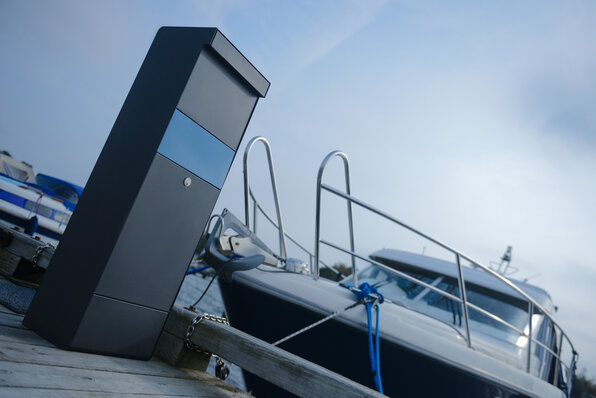
2004 • A Desire to Expand the Activities.
Juliana Drivhuse A/S had been running a successful greenhouse business for a number of years at this point, and now the company wanted to widen the scope of its activities. They did so by acquiring Allux, a Danish mailbox manufacturer, in 2001.
These two products seem dissimilar offhand, but as mailboxes are usually sold in the winter, i.e. from November to February, they were a good match because the product combination gave the company’s sales reps something else to do when greenhouse sales were slow.
Yet another strategic acquisition was made in 2004. The company in question this time was Aarup Halmvare, which manufactured various garden products, such as bird feeders, trellises and garden fences. At the same time, the acquisition made it possible for the third generation, in the person of Nikolaj Stærmose, to take on the challenge of running a business.
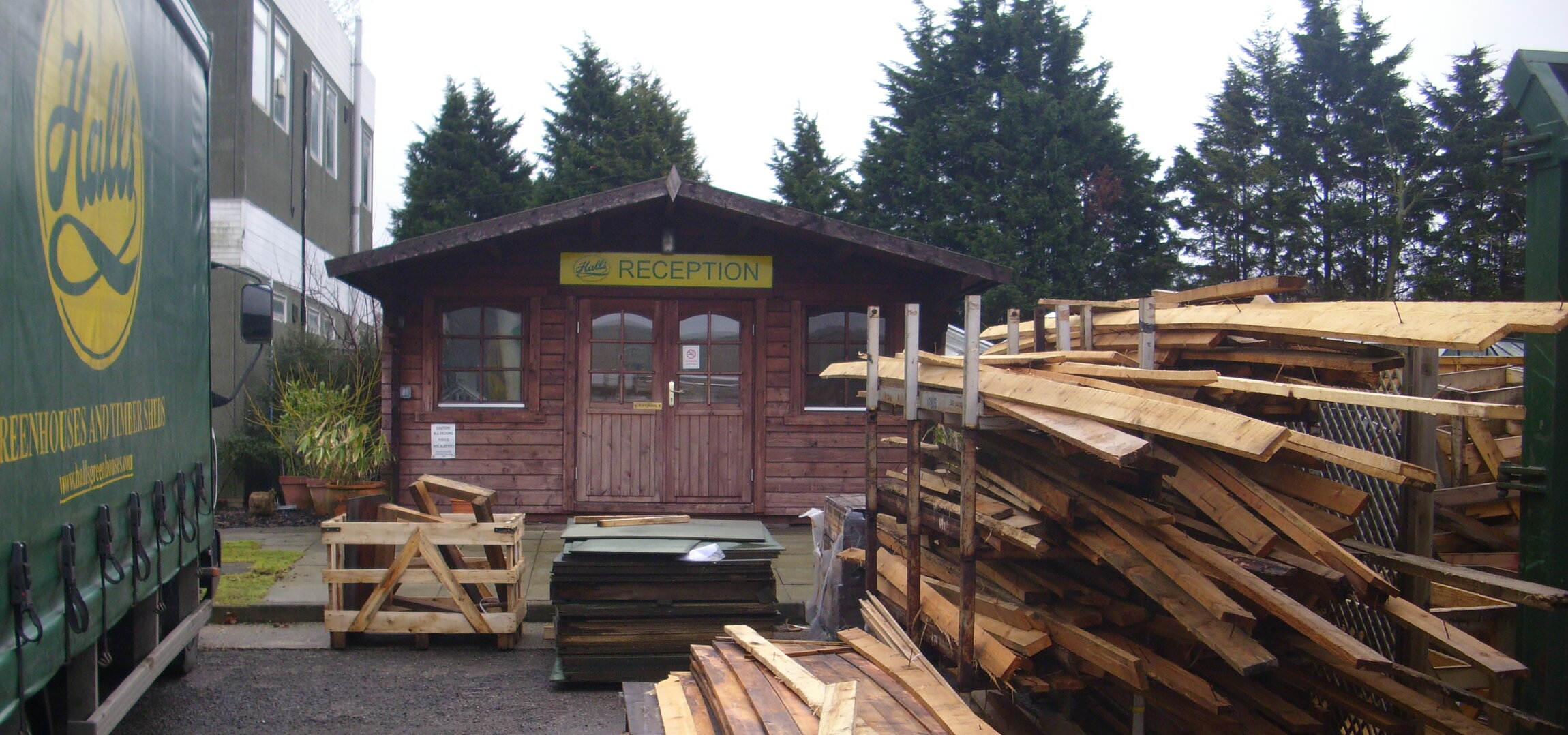

2012 • A Groundbreaking Step, the Opening of a Showroom.
In 2012 we took an epochal step when we opened our own showroom and store in Denmark, more specifically Juliana Greenhouse Centre in Odense close to the factory. Since then more greenhouse centres have opened around the country. Greenhouse enthusiasts and interested customers can now visit the dedicated greenhouse stores and get advised and consulted in regard to life with a greenhouse. Moreover, they can take a walk around the many exhibited greenhouse- and orangery models to get inspired by the wide range of greenhouse accessories, that help simplify the greenhouse caring.
In 2016 we welcomed the latest addition to the greenhouse centre family, as we established a greenhouse centre in Copenhagen. Now Juliana has greenhouse centres in five central parts of Denmark.
.
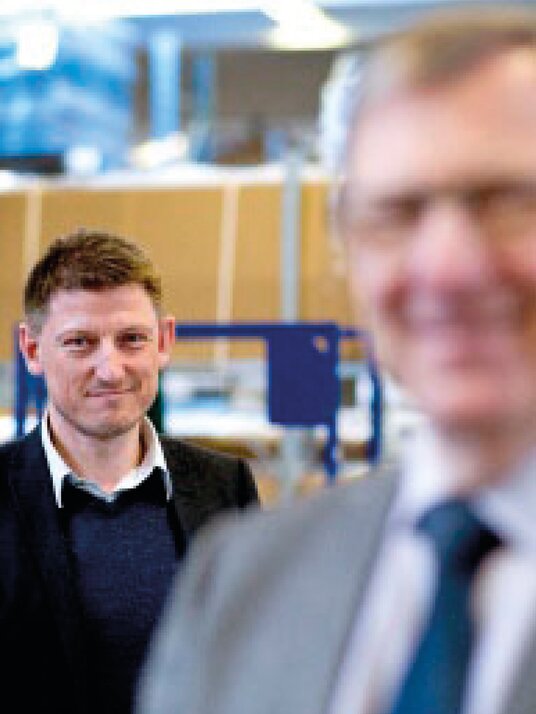
2015 • From the Second Stærmose to the Third
2015 became the year of the second generational changeover in the history of the company. And yet again it was quite unexpected. The new owner and day-to-day manager Nikolaj Stærmose has an entirely different education, that is an MA in History. Bo Stærmose had challenged Nikolaj to manage a subsidiary company that Juliana had bought in 2004, which aroused Nikolaj’s attention, despite his untypical education.
It became the start of a gradual generational changeover, where Nikolaj was handed more and more responsibility in the concern, and Bo Stærmose gradually withdrew from different lines of business. The generational changeover was celebrated in the summer 2015 with a party for all members of staff. Since then Bo Stærmose has acted as chairman of the board of Juliana Greenhouses A/S.
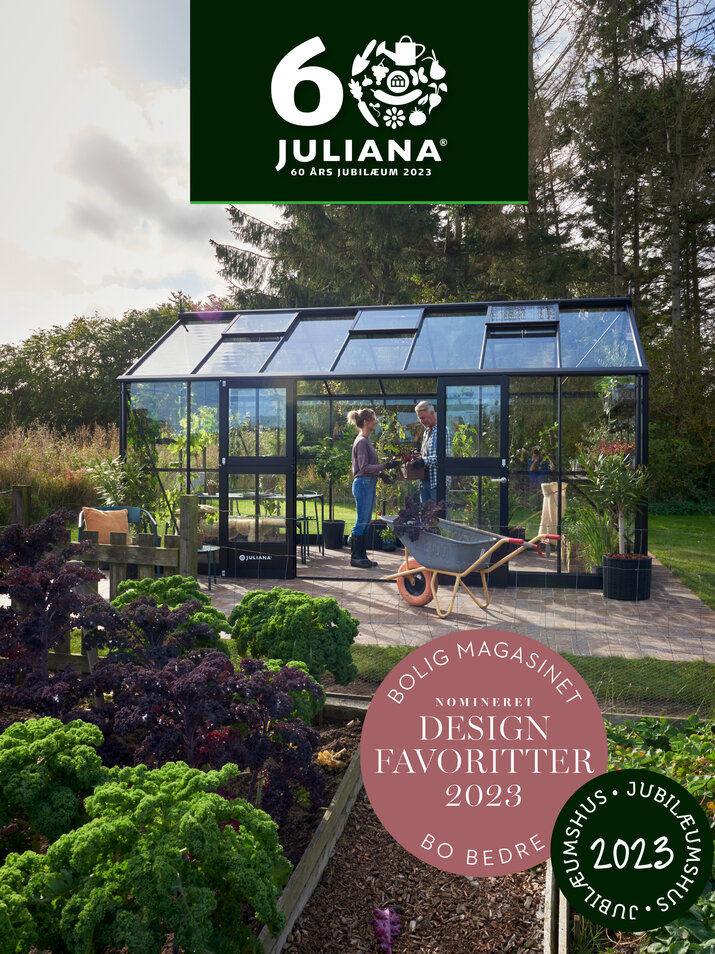
2023 • Juliana Celebrates Its 60th Anniversary
Mogens A. Stærmose founded the company 60 years ago.
Juliana Group A/S' focus is on the core of the company, greenhouses and orangeries, that make up 90 % of the sales. The last 10 % come from mailboxes for private residences.
‘’We have no plans of expanding our product range’’, Nikolaj Stærmose explains, who believes in a continuing growth potential in both product areas. ‘’For every mailbox there is a considerable export potential, and the greenhouses fit nicely into today’s megatrends, that are all about the good life, local cultivation, and a relaxing room in the garden, and can room many activities with family and friends’’, Nikolaj Stærmose explains.
We help people grow! This statement both reflects Juliana’s wish towards the world and into the company, as Juliana wants to help both greenhouse customers and Juliana employees to grow, as humans or with cultivating tomatoes, cucumbers, chili, or however the greenhouse is used for.
